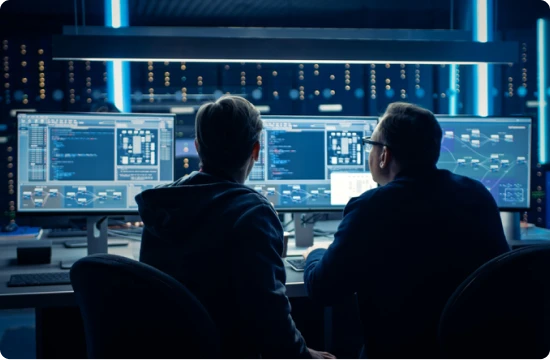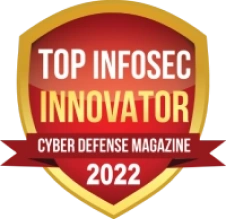Key Functions of a SOC: Protecting Your Organization
A Security Operations Center (SOC) is a centralized unit dedicated to managing and enhancing an organization’s cybersecurity. Its key functions go beyond simply detecting and responding to threats; it involves a holistic approach to safeguarding your digital assets, data, and systems. Let’s explore the critical roles a SOC plays in protecting your organization.
- Continuous Threat Monitoring One of the primary functions of a SOC is round-the-clock monitoring of an organization’s IT environment. Cyber threats can emerge at any time, and having a team constantly keeping an eye on your network ensures swift identification of suspicious activities. Using advanced tools like Security Information and Event Management (SIEM) systems and endpoint detection platforms, SOC analysts analyze data from various sources to detect anomalies before they escalate.
- Proactive Threat Detection SOC teams are equipped to identify vulnerabilities and potential attack vectors before they can be exploited. This proactive approach helps organizations stay one step ahead of cybercriminals. Leveraging threat intelligence, the SOC can recognize patterns and indicators of compromise (IOCs),enabling early intervention and reducing the risk of a security breach.
- Incident Response and Mitigation When a cyber incident occurs, a SOC’s role is to act swiftly to contain and mitigate the threat. The team follows predefined incident response protocols to minimize damage, secure affected systems, and prevent further spread. This process includes investigating the root cause, isolating compromised areas, and applying patches or fixes to restore normalcy.
- Vulnerability Management A SOC is also responsible for identifying and addressing vulnerabilities within an organization’s infrastructure. Regular vulnerability assessments and penetration testing help uncover weak points in systems, applications, and networks. By patching these vulnerabilities, the SOC reduces the likelihood of successful attacks.
- Security Awareness and Compliance Another critical function of a SOC is to ensure that the organization meets regulatory requirements and industry standards. SOC teams provide compliance reports, conduct audits, and implement necessary controls to avoid penalties. Additionally, they play a role in fostering a culture of security awareness within the organization, ensuring employees understand their role in preventing cyber threats.
- Post-Incident Analysis After an incident is resolved, the SOC conducts a thorough analysis to understand what went wrong and how to prevent similar occurrences in the future. This continuous improvement process helps strengthen the organization’s overall security posture. By fulfilling these essential functions, a SOC acts as the guardian of your organization’s digital assets, enabling you to operate securely in an increasingly hostile cyber landscape.
Why Your Business Needs a SOC
In today’s digital-first world, businesses face an ever-increasing array of cyber threats, from ransomware and phishing to sophisticated zero-day attacks. A Security Operations Center (SOC) is no longer a luxury for organizations but a necessity to safeguard sensitive data, maintain operational continuity, and meet regulatory requirements. Here’s why your business needs a SOC and the invaluable role it plays in protecting your organization.
- Around-the-Clock Cybersecurity Cyberattacks don’t follow a 9-to-5 schedule; they can strike at any time. A SOC ensures your business is protected 24/7 by monitoring network activity, detecting anomalies, and responding to threats in real-time. This continuous vigilance minimizes the risk of downtime or data breaches that could harm your reputation and bottom line.
- Rapid Threat Detection and Response The speed at which an organization detects and responds to a cyber threat can make the difference between a minor disruption and a catastrophic breach. SOC teams are trained to recognize potential threats quickly and act decisively to neutralize them. This capability is critical in limiting the impact of attacks, protecting your data, and maintaining customer trust.
- Cost Savings from Preventing Attacks Investing in a SOC can save your business significant costs in the long run. Data breaches, downtime, and reputational damage can result in millions of dollars in losses. By proactively monitoring and mitigating threats, a SOC helps prevent these costly incidents, providing a substantial return on investment.
- Regulatory Compliance Many industries, such as healthcare, finance, and retail, are subject to strict cybersecurity regulations. Failing to meet these requirements can lead to hefty fines and legal consequences. A SOC helps ensure your business complies with these regulations by monitoring and reporting on key security metrics and implementing necessary controls.
- Expertise in a Complex Cyber Landscape Cybersecurity is a constantly evolving field, with new threats and technologies emerging regularly. Building an in-house team with the expertise to stay ahead of these changes can be challenging and expensive. A SOC provides access to experienced cybersecurity professionals and advanced tools to keep your business protected without the need to hire and train a full internal team.
- Enhanced Business Resilience A SOC contributes significantly to an organization’s overall resilience by ensuring that security incidents are managed efficiently and disruptions are minimized. This resilience allows your business to recover quickly from attacks and maintain uninterrupted operations, even in the face of evolving threats.
By providing comprehensive threat management, compliance support, and expert analysis, a SOC is an essential investment for businesses of all sizes. In a world where the question is not if but when a cyberattack will occur, having a SOC can mean the difference between thriving securely and facing significant losses.
The Role of SOC Analysts in Cybersecurity
Security Operations Center (SOC) analysts are the backbone of any effective cybersecurity strategy. These highly skilled professionals work tirelessly to monitor, detect, and respond to cyber threats, ensuring an organization’s digital assets remain secure. Their expertise and vigilance are critical in an era where cyberattacks are more frequent and sophisticated than ever before. Here’s a closer look at the pivotal role SOC analysts play in cybersecurity.
- Monitoring and Analyzing Network Activity SOC analysts are responsible for continuously monitoring an organization’s IT environment, including networks, endpoints, and servers. They use advanced tools, such as Security Information and Event Management (SIEM) systems, to collect and analyze data for signs of suspicious activity. By identifying anomalies and potential threats early, they help prevent small issues from escalating into major breaches.
- Threat Detection and Prioritization Not all threats pose the same level of risk, and SOC analysts are trained to distinguish between critical incidents and minor anomalies. They assess each potential threat, prioritize them based on severity, and determine the appropriate course of action. This ensures that the most dangerous threats are addressed promptly while minimizing disruptions to the organization.
- Incident Response and Mitigation When a security incident occurs, SOC analysts are on the front lines. They follow established protocols to contain the threat, mitigate damage, and restore normal operations. This can involve isolating affected systems, applying patches, or deploying countermeasures to neutralize the attack. Their quick and effective response is essential to minimizing the impact of cyber incidents.
- Conducting Forensic Investigations After a security incident, SOC analysts conduct forensic investigations to determine how the attack occurred, what vulnerabilities were exploited, and what data or systems were affected. This information is used to strengthen the organization’s defenses and prevent similar incidents in the future.
- Proactive Threat Hunting SOC analysts don’t just react to threats—they actively hunt for them. Using threat intelligence and advanced analytics, they search for signs of malicious activity that might not trigger traditional alerts. This proactive approach helps uncover hidden threats and vulnerabilities before they can be exploited.
- Providing Security Insights and Recommendations SOC analysts play a crucial role in guiding an organization’s overall cybersecurity strategy. They provide insights based on their monitoring and analysis, recommending measures to improve security, enhance policies, and deploy new tools or technologies as needed.
- Ensuring Compliance Many industries are subject to stringent cybersecurity regulations, and SOC analysts help ensure the organization meets these requirements. They monitor compliance-related metrics, prepare reports for audits, and implement necessary controls to avoid legal or financial penalties.
SOC analysts are the unsung heroes of modern cybersecurity, working behind the scenes to keep organizations safe from a wide range of threats. Their combination of technical expertise, analytical skills, and vigilance makes them indispensable in safeguarding today’s digital ecosystems.






